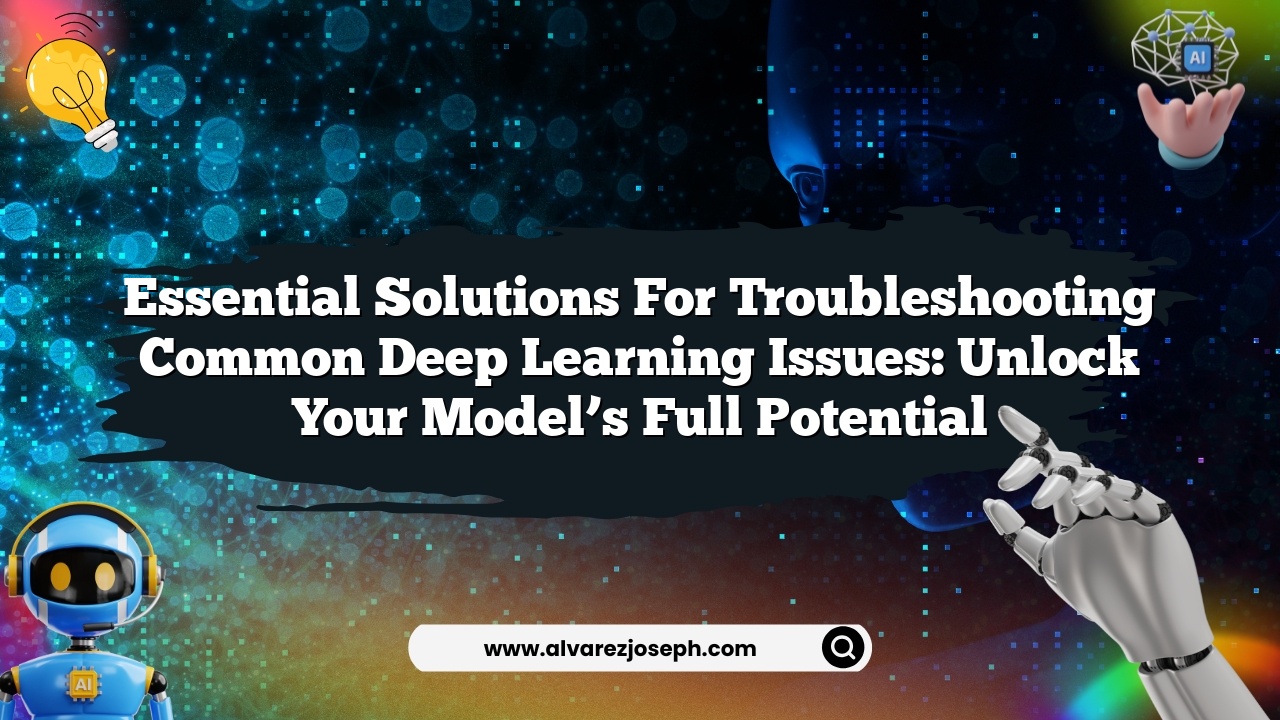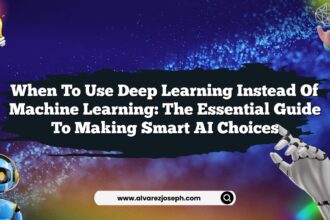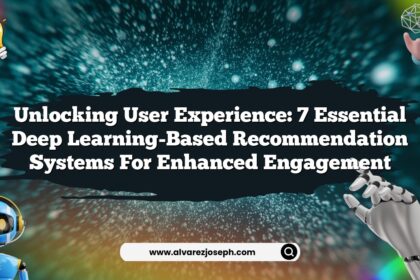The world of deep learning is often akin to exploring the depths of the ocean—there are wonders to discover, but it’s easy to get lost in the complexities. Imagine you’ve meticulously crafted a model, but it just won’t perform as expected. Frustrating, isn’t it? Well, fear not, because we’re about to dive deep into essential solutions for troubleshooting common deep learning issues that can help unlock your model’s full potential. So grab your snorkel, and let’s plunge into the ocean of knowledge!
Understanding Common Deep Learning Hiccups
Every deep learning enthusiast has been there—your model refuses to cooperate, and no matter what you try, it seems determined to underperform. But what are these common issues? Let’s explore some of the usual suspects that can turn your machine learning dreams into nightmares.
-
Overfitting and Underfitting
- Overfitting occurs when your model learns too much from the training data, capturing noise instead of the underlying pattern. Think of it as memorizing the answers to a test instead of understanding the subject. On the flip side, underfitting happens when your model is too simplistic, failing to capture relevant trends.
-
Data Quality Issues
- Garbage in, garbage out. If your data is inconsistent, incomplete, or biased, your model’s performance will reflect that. It’s like trying to bake a cake with expired ingredients—no wonder it flops!
-
Hyperparameter Tuning
- Finding the right hyperparameters can feel like searching for a needle in a haystack. Too high or too low of a learning rate can derail your training process, leading to either slow convergence or exploding gradients.
-
Inadequate Model Architecture
- Sometimes, your choice of architecture might not be suitable for your specific task. Using a sledgehammer to crack a nut is a classic example here—your model could be too complex or too simple for your data.
-
Imbalanced Datasets
- If your classes are imbalanced, your model might become biased towards the majority class, leading to skewed predictions. It’s like asking a room full of people to vote on a single topic, but only providing them with options that cater to one group.
-
Insufficient Training Data
- Deep learning models require substantial amounts of data to learn effectively. If your dataset is too small, your model will struggle, much like trying to learn to swim with just a puddle.
By identifying these challenges, you’ve already taken the first step toward unlocking your model’s full potential. But don’t worry, we’re about to delve into practical solutions that will help you navigate these murky waters!
Practical Solutions to Enhance Your Deep Learning Model
Now that we’ve pinpointed some common issues, let’s transform that frustration into triumph. Here’s how you can troubleshoot and enhance your deep learning models effectively.
Tackling Overfitting and Underfitting
To combat overfitting, consider these techniques:
- Regularization Techniques: Implement L1 or L2 regularization to penalize excessive weights. This helps your model focus on the most significant features instead of the noise.
- Dropout Layers: Adding dropout layers during training randomly ignores portions of the neural network, making it more robust to unseen data.
To address underfitting, you can:
- Increase Model Complexity: Opt for a more sophisticated model architecture, adding layers or nodes where necessary.
- Feature Engineering: Sometimes, the data needs a bit of finesse. Create new features that capture the underlying patterns better.
Ensuring High Data Quality
Next, let’s talk about data quality! Here’s how you can ensure your data is top-notch:
- Data Cleaning: Scrutinize your dataset for duplicates or inconsistencies. It’s like decluttering your closet—get rid of what you don’t need.
- Data Augmentation: For image data, techniques like rotation, flipping, and scaling can artificially increase your dataset size, helping your model generalize better.
Mastering Hyperparameter Tuning
Hyperparameter tuning can be a nuisance, but here’s how you can master it:
- Grid Search/Cross-Validation: Experiment with various combinations of hyperparameters to find the best fit. Think of it as trying on different outfits until you find the one that fits perfectly.
- Automated Tools: Utilize libraries like Optuna or Hyperopt to help automate the hyperparameter search process. It’s like having a personal stylist for your model.
Choosing the Right Model Architecture
When it comes to architecture, always tailor it to your task:
- Experiment with Architectures: Don’t shy away from trying different architectures! Whether it’s convolutional neural networks (CNNs) for image tasks or recurrent neural networks (RNNs) for sequential data—diversity is key.
- Transfer Learning: Use pre-trained models as a starting point. It’s like taking an advanced class taught by an expert—you’ll grasp the fundamentals faster.
Addressing Imbalanced Datasets
Imbalanced datasets need special attention. Here’s how to level the playing field:
- Resampling Techniques: Apply oversampling for minority classes or undersampling for majority classes to balance the dataset.
- Class Weights: Adjust the class weights in your loss function to give more importance to the minority class. It’s like making sure everyone gets a say in a group discussion.
Expanding Your Dataset
If you find yourself lacking data, consider these strategies:
- Collect More Data: Whenever possible, gather additional data. Think of it as adding more ingredients to a recipe for a richer flavor.
- Synthetic Data Generation: Leverage techniques like GANs (Generative Adversarial Networks) to create synthetic data. It’s like inviting friends over to spice up a dull party!
Fine-Tuning and Continuous Learning
Troubleshooting doesn’t stop at your initial model deployment. Continuous learning is vital. Regularly evaluate your model’s performance and be open to revisions. The world is constantly evolving; so should your model.
Monitoring and Maintenance
Keep an eye on your model’s performance over time. Here’s how:
- Performance Metrics: Regularly check metrics like accuracy, precision, recall, and F1-score to ensure your model is performing as expected.
- Live Feedback: Implement mechanisms to gather user feedback. It’s like asking for a second opinion on your latest outfit—constructive criticism can be incredibly valuable!
Staying Updated with Trends
The field of deep learning is ever-evolving. Stay updated on the latest trends, techniques, and tools. Engage with the community through forums, webinars, and online courses. After all, learning is a lifelong journey, much like perfecting your recipe for the perfect chocolate cake.
Embracing the Journey
Remember, troubleshooting is as much a part of the process as the initial building of your model. Celebrate your wins, learn from your failures, and always be curious. Each challenge you encounter is an opportunity to grow and refine your skills.
Closing Thoughts
Deep learning is a thrilling adventure, filled with both challenges and victories. As you embark on this journey, keep these troubleshooting strategies close at hand. They’ll not only assist you in overcoming obstacles but also empower you to unlock the full potential of your models. Now, who’s ready to dive back in?
Quick Summary
- Overfitting and Underfitting: Use regularization and dropout layers to combat overfitting, and increase model complexity for underfitting.
- Data Quality Issues: Clean your dataset and utilize data augmentation techniques for enhanced quality.
- Hyperparameter Tuning: Implement grid search and automated tools to fine-tune hyperparameters effectively.
- Model Architecture: Experiment with different architectures and consider transfer learning to improve performance.
- Imbalanced Datasets: Employ resampling techniques and class weights to address imbalanced data.
- Expanding Dataset: Collect more data or generate synthetic data to enhance model training.
- Continuous Learning: Regularly evaluate and adjust your model based on performance metrics.
- Monitoring and Maintenance: Keep track of your model’s performance and gather live user feedback.
- Stay Updated: Engage with the community and learn about the latest trends in deep learning.
- Embrace the Journey: Celebrate successes and learn from failures as you refine your skills.
Frequently Asked Questions
What is overfitting in deep learning?
Overfitting occurs when a model learns the training data too well, capturing noise instead of the underlying trend, leading to poor performance on unseen data.
How can I improve my model’s accuracy?
Improving a model’s accuracy can involve techniques like feature engineering, hyperparameter tuning, and using ensemble methods.
What are some common data quality issues?
Common issues include missing values, duplicates, bias, and inconsistencies within the dataset.
How can I handle imbalanced datasets?
You can handle imbalanced datasets through resampling techniques, adjusting class weights, or using specialized algorithms designed for imbalance.
What are hyperparameters in deep learning?
Hyperparameters are the external configurations of a model that are set before training, such as learning rate, batch size, and the number of layers.
Why should I use transfer learning?
Transfer learning allows you to leverage pre-trained models, saving time and resources while achieving better performance on tasks with limited data.












